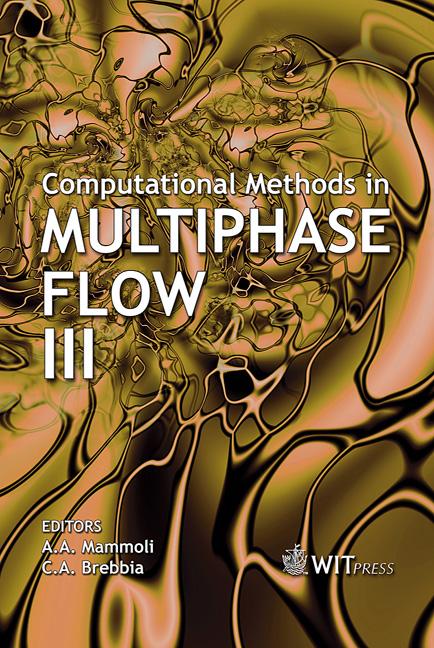Modelling Of Coagulation Efficiencies In Rotating Systems
Price
Free (open access)
Transaction
Volume
50
Pages
10
Published
2005
Size
894 kb
Paper DOI
10.2495/MPF050011
Copyright
WIT Press
Author(s)
M. Breitling & M. Piesche
Abstract
Under the influence of an induced shear and centrifugal field, inter-particle collisions of solid particles in liquids as well as viscous forces result in agglomeration, breakage, and erosion. There is a permanent alteration of the particle size distribution which is described mathematically by the method of population balances. Due to the uniform surface charge of the dispersed particles, a self-induced agglomeration does not take place automatically which means that coagulant agents need to be added to the suspension. The influence of these electrolytes is taken into account by the so-called coagulation efficiency. In the course of this work, two different models are developed describing the collision efficiency locally and in dependence on apparatus geometry, operating conditions, particle combination (species and mass), coagulant agents and material properties. It is shown that in highly rotating systems particle collisions result in small agglomerates although being exposed to large centrifugal forces and shear forces. Keywords: coagulation efficiency, populations balances, centrifuge, suspension, multiphase flow. 1 Introduction In mechanical separation units rotating apparatuses are relatively common. Especially highly rotating disc stack centrifuges become increasingly popular due to their good separation efficiency and the disbandment of filter media. Since the separation is exclusively caused by different densities of the phases, disc stack centrifuges are adapted for the separation of all kinds of dispersed systems (emulsions, aerosols, and suspensions). By using coagulating agents which induce the formation of agglomerates, the separation of very small particles becomes more efficient.
Keywords
coagulation efficiency, populations balances, centrifuge, suspension, multiphase flow.





